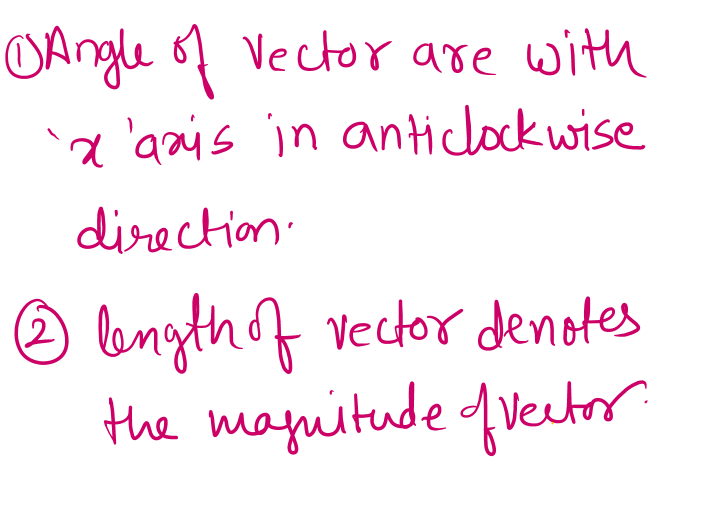Using the given data Using Vector addition Graph the following 4 forces onto the graph below. It should be located on 1 quadrant on the graphs with all of the forces and angles combined to form a triangular shape. Label ur triangle that u have graphed. It shouldn't be in static equilibrium as there was an error in the lab experiment.
Using the given data Using Vector addition Graph the following 4 forces onto the graph below. It should be located on 1 quadrant on the graphs with all of the forces and angles combined to form a triangular shape. Label ur triangle that u have graphed. It shouldn't be in static equilibrium as there was an error in the lab experiment.
College Physics
11th Edition
ISBN:9781305952300
Author:Raymond A. Serway, Chris Vuille
Publisher:Raymond A. Serway, Chris Vuille
Chapter1: Units, Trigonometry. And Vectors
Section: Chapter Questions
Problem 1CQ: Estimate the order of magnitude of the length, in meters, of each of the following; (a) a mouse, (b)...
Related questions
Question
Using the given data Using Vector addition Graph the following 4 forces onto the graph below. It should be located on 1 quadrant on the graphs with all of the forces and angles combined to form a triangular shape. Label ur triangle that u have graphed. It shouldn't be in static equilibrium as there was an error in the lab experiment.

Transcribed Image Text:**Static Equilibrium with Four Forces (All four angles cannot be 90 degrees)**
| Force | Mass (kg) | F = 9.8 m/s² x mass (N) | Angle in degrees (θ) | \( F_x = F \cos \theta \) | \( F_y = F \sin \theta \) |
|--------|-----------|-------------------------|----------------------|---------------------------|---------------------------|
| Force 1 | 0.085 kg | 0.86 N | 12 | 0.81 | -0.73 |
| Force 2 | 0.055 kg | 0.53 N | 67 | 0.210 | 0.17 |
| Force 3 | 0.106 kg | 1.03 N | 175 | -1.035 | 0.50 |
| Force 4 | 0.075 kg | 0.73 N | 275 | 0.06 | 0.09 |
**Sum of x component and y component of each force:**
- \( \sum F_x = 0.04 \)
- \( \sum F_y = 0.03 \)
**Explanation of the Graph**
The graph is a grid layout suitable for plotting the components of the forces listed in the table. The x-axis and y-axis are centered in the middle of the grid, allowing for both positive and negative values, which is essential for accurately representing forces with both positive and negative components. Each square on the grid can be used to represent specific units of the force components, typically in Newtons, based on the scale chosen by the user. This visual representation helps in understanding how the individual components sum up to achieve static equilibrium.
Expert Solution
Step 1

Step by step
Solved in 3 steps with 4 images

Knowledge Booster
Learn more about
Need a deep-dive on the concept behind this application? Look no further. Learn more about this topic, physics and related others by exploring similar questions and additional content below.Recommended textbooks for you

College Physics
Physics
ISBN:
9781305952300
Author:
Raymond A. Serway, Chris Vuille
Publisher:
Cengage Learning

University Physics (14th Edition)
Physics
ISBN:
9780133969290
Author:
Hugh D. Young, Roger A. Freedman
Publisher:
PEARSON

Introduction To Quantum Mechanics
Physics
ISBN:
9781107189638
Author:
Griffiths, David J., Schroeter, Darrell F.
Publisher:
Cambridge University Press

College Physics
Physics
ISBN:
9781305952300
Author:
Raymond A. Serway, Chris Vuille
Publisher:
Cengage Learning

University Physics (14th Edition)
Physics
ISBN:
9780133969290
Author:
Hugh D. Young, Roger A. Freedman
Publisher:
PEARSON

Introduction To Quantum Mechanics
Physics
ISBN:
9781107189638
Author:
Griffiths, David J., Schroeter, Darrell F.
Publisher:
Cambridge University Press

Physics for Scientists and Engineers
Physics
ISBN:
9781337553278
Author:
Raymond A. Serway, John W. Jewett
Publisher:
Cengage Learning

Lecture- Tutorials for Introductory Astronomy
Physics
ISBN:
9780321820464
Author:
Edward E. Prather, Tim P. Slater, Jeff P. Adams, Gina Brissenden
Publisher:
Addison-Wesley

College Physics: A Strategic Approach (4th Editio…
Physics
ISBN:
9780134609034
Author:
Randall D. Knight (Professor Emeritus), Brian Jones, Stuart Field
Publisher:
PEARSON